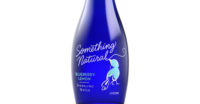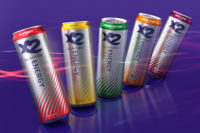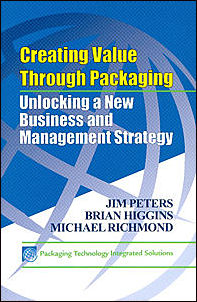Discovering 'Natural' Design

Discovering ‘Natural’ Design
Here’s an idea for rethinking product development and marketing. It improves the relationship between marketers and consumers.
When it comes to successful packaging, consumers are the ultimate judges. But gathering insights into consumer preferences of package designs usually means waiting until after the product has gathered dust on the store shelf or found its way into a shopping cart. That’s not to say that traditional approaches to package design lack consumer input.
Brand managers usually apply qualitative methods to package development. These include participant observation, open-ended interviews, focus groups and clinics. Survey research and analysis provide quantitative insight into consumer responses.
Typically, marketers seek consumer input at different points in the product-development cycle. These include both quantitative and qualitative techniques.
You’ve made expensive commitments in trying to “inject the voice of the consumer” into the development process. So why does some packaging still fail?
If consumers truly impact the decisions that drive package development, why are any packaged goods languishing in the store?
If consumers truly impact the decisions that drive package development, why are any packaged goods languishing in the store?
The answers lie in the gap between what I view as the “artificial” and “natural” approaches to design. The differences, in a nutshell:
- Natural designs evolve in direct response to actual consumer demand, early in the planning process.
- Artificial designs rely on limited and sometimes flawed consumer preference data late in the process.
The natural and artificial approaches to package design differ considerably.
- Natural designs evolve in direct response to actual consumer demand, early in the planning process.
- Artificial designs rely on limited and sometimes flawed consumer preference data late in the process.
The natural and artificial approaches to package design differ considerably.
Natural vs. artificial design
We operate in a world of limited budgets and market-driven deadlines. So, the constraints of traditional research techniques limit the process of translating “visions” into product or package prototypes.
Brainstorming and idea-generation must end with the selection of a manageable number of package prototypes. We examine and refine these prototypes through development team meetings, focus groups and large-scale product testing.
But this “winnowing” process artificially limits the number of design variables a product team can explore with consumers.
At some point, product teams must stop the flow of new ideas and move the project forward. The decision may be premature, and in doing so, you face two risks:
- It potentially excludes new features that could resonate deeply with target consumers.
- It could include product features that may not perform when the product reaches the market.
- It potentially excludes new features that could resonate deeply with target consumers.
- It could include product features that may not perform when the product reaches the market.
On the other hand, consider that for any product, the best combination of features will resonate most deeply with target consumers. This is the “natural” design process, and it aligns closely to the wants and preferences of your target consumers.
However, even the natural design approach presents challenges. These include development team hunches and limits to the number of prototypes you may test in focus-group settings and surveys.
Uncovering the natural design requires that brand managers and product development teams inject vast amounts of consumer input early. This must continue throughout the development cycle.
A co-evolutionary process
What if the development team had unlimited ideas to explore efficiently with consumers prior to product launch? And many consumers could explore millions of design options and co-evolve those most likely to succeed?
One approach that could give you the results you need uses IDEA (Interactive Design by Evolutionary Algorithms) technology at Affinova Inc. Leveraging technologies based on “survival of the fittest,” IDEA mimics the process of natural selection. Consumers determine the “fittest” products after reviewing successive sets of package design options.
IDEA allows product teams to explore and optimize an expanded number of design options.
IDEA allows product teams to explore and optimize an expanded number of design options.
Using the Internet to involve consumers early in package development, IDEA removes the artificial and subjective “winnowing” phase from the process.
Product development teams can discover the designs that consumers most prefer.
Product development teams can discover the designs that consumers most prefer.
The author, Rob Frasca, is President of Affinnova Inc., a brand and product optimization firm in Cambridge, Mass. Contact him at 781.464.4700 or visit www.affinnova.com
P&G shortens package redevelopment time, gains market share
A natural approach to design produced a consumer-friendly package for Procter & Gamble’s Tampax Tampons brand. The package reached the store shelf four months ahead of schedule and increased market share.
Packaging for competing brands had begun to resemble Tampax’ cartons. P&G feared that this sameness was confusing consumers about the differences in feminine hygiene products. Tampax had also begun to lose market share.
P&G went to work on a new package that would reach two goals:
1. Revise and contemporize Tampax packaging to make it distinctive.
2. Develop visual cohesiveness across the brand.
P&G went to work on a new package that would reach two goals:
1. Revise and contemporize Tampax packaging to make it distinctive.
2. Develop visual cohesiveness across the brand.
Using Affinnova’s IDEA technology, P&G let consumers view many package designs during testing. P&G also eliminated steps in package development.
Package development team members began by interviewing two groups of 400 consumers each. One group purchases the Tampax brand while the other doesn’t.
The team sought to identify and understand the most compelling combination of package design and product-claim elements. This “product DNA” would yield clues about consumers’ most preferred package for the product.
Next, the team reduced the package design to its basic elements—background color, graphics, logo, product descriptor and secondary messaging. This step produced more than 1,700 front-panel and 2,000 back-panel designs.
In addition, the team generated a range of design variations for each element. These, in turn, presented a universe of possible design combinations.
Project participants viewed photo-quality images of prototype package designs on the Internet. They indicated preferences through a rating scale.
This step presented holistic package designs. Participants could evaluate complete package designs on the computer screen rather than viewing packaging components one by one.
P&G created the top-, front- and back-panel designs based on responses from both groups of consumers.
P&G created the top-, front- and back-panel designs based on responses from both groups of consumers.
Using photo-quality renderings of the remaining design candidates, P&G viewed images of consumers’ preferred package designs and selected the winner.
P&G cancelled follow-up quantitative research. It deemed the step of “double checking” its research as unnecessary. The reason? It received consumer input at the start of the process.
Looking for a reprint of this article?
From high-res PDFs to custom plaques, order your copy today!






